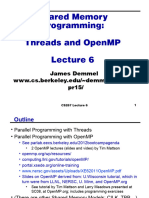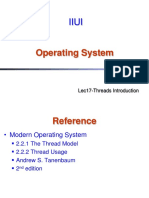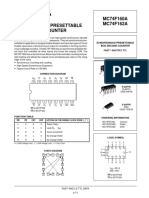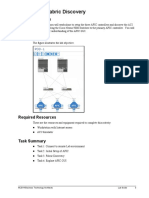0% found this document useful (0 votes)
146 views14 pagesThread Programming
This document introduces programming with threads. It discusses that a thread is a single flow of control within a process that can have multiple threads sharing the same memory space. Threads are useful for overlapping I/O and computation, in distributed systems, and to better utilize multi-processor systems. The key mechanisms for threading include thread creation, mutual exclusion using mutexes, waiting for events using condition variables, and interrupting a thread's wait. Mutexes control access to shared data, while condition variables allow threads to wait for specific events.
Uploaded by
Umair GujjarCopyright
© Attribution Non-Commercial (BY-NC)
We take content rights seriously. If you suspect this is your content, claim it here.
Available Formats
Download as PPT, PDF, TXT or read online on Scribd
0% found this document useful (0 votes)
146 views14 pagesThread Programming
This document introduces programming with threads. It discusses that a thread is a single flow of control within a process that can have multiple threads sharing the same memory space. Threads are useful for overlapping I/O and computation, in distributed systems, and to better utilize multi-processor systems. The key mechanisms for threading include thread creation, mutual exclusion using mutexes, waiting for events using condition variables, and interrupting a thread's wait. Mutexes control access to shared data, while condition variables allow threads to wait for specific events.
Uploaded by
Umair GujjarCopyright
© Attribution Non-Commercial (BY-NC)
We take content rights seriously. If you suspect this is your content, claim it here.
Available Formats
Download as PPT, PDF, TXT or read online on Scribd
/ 14

























































































